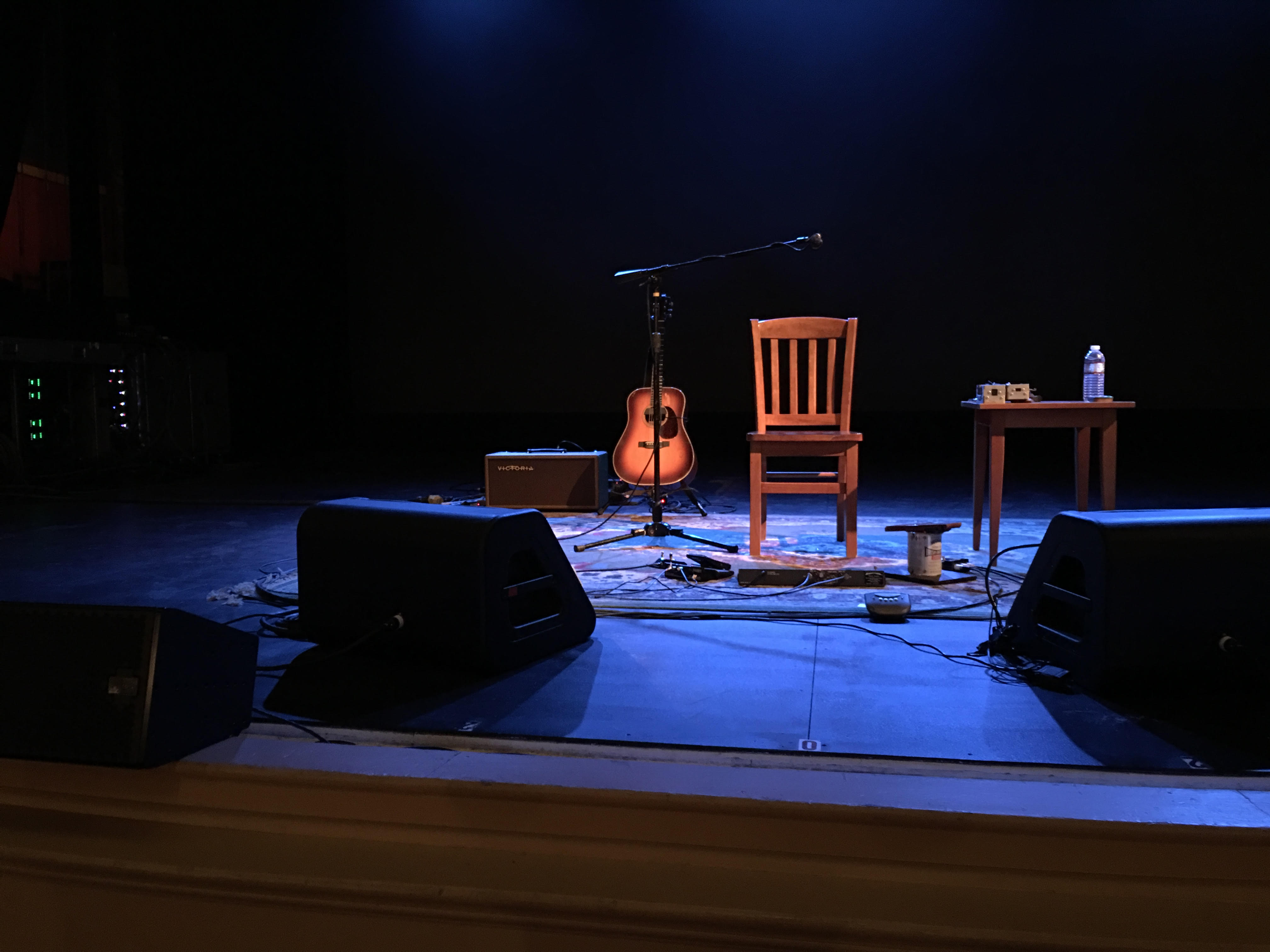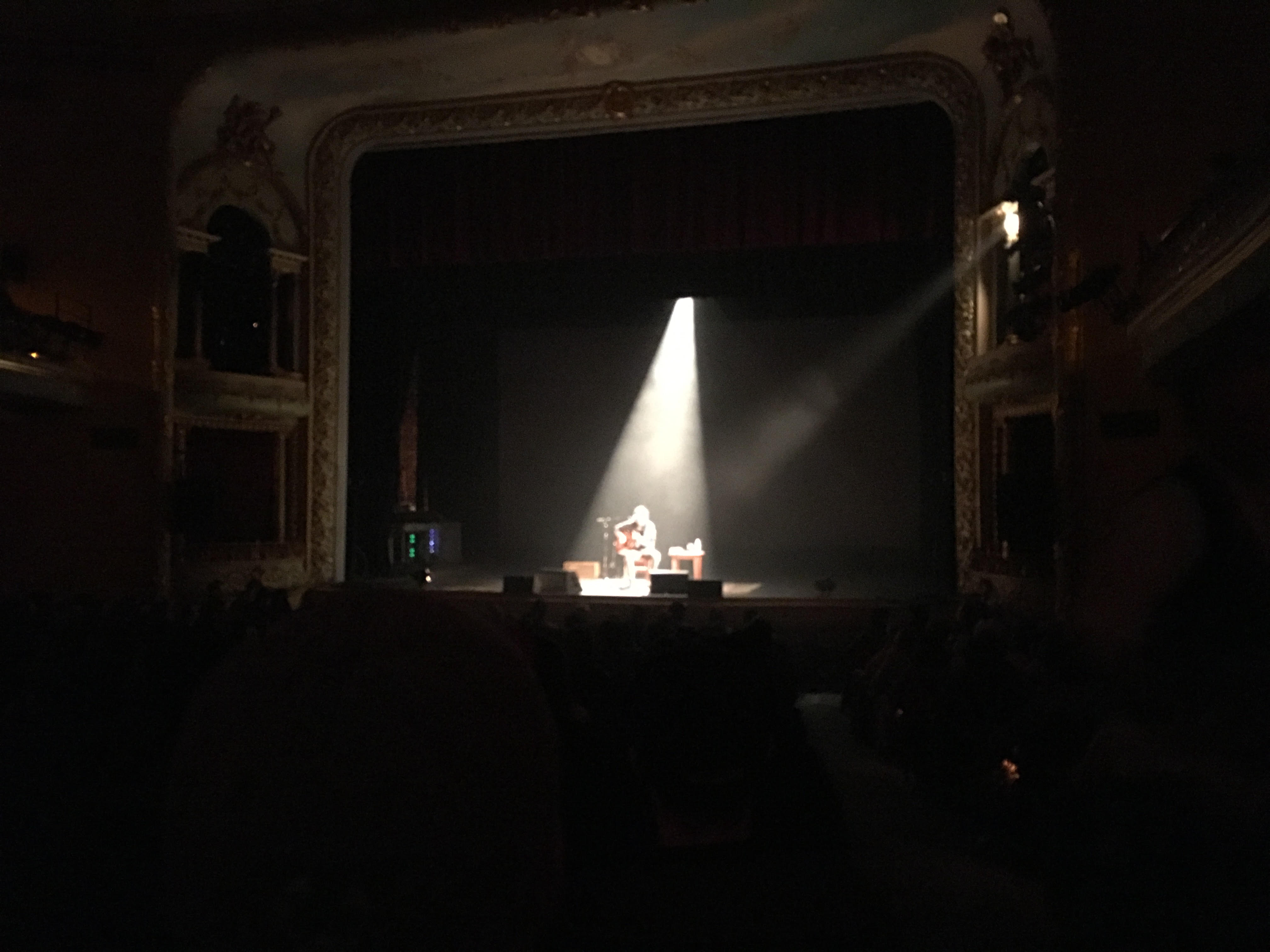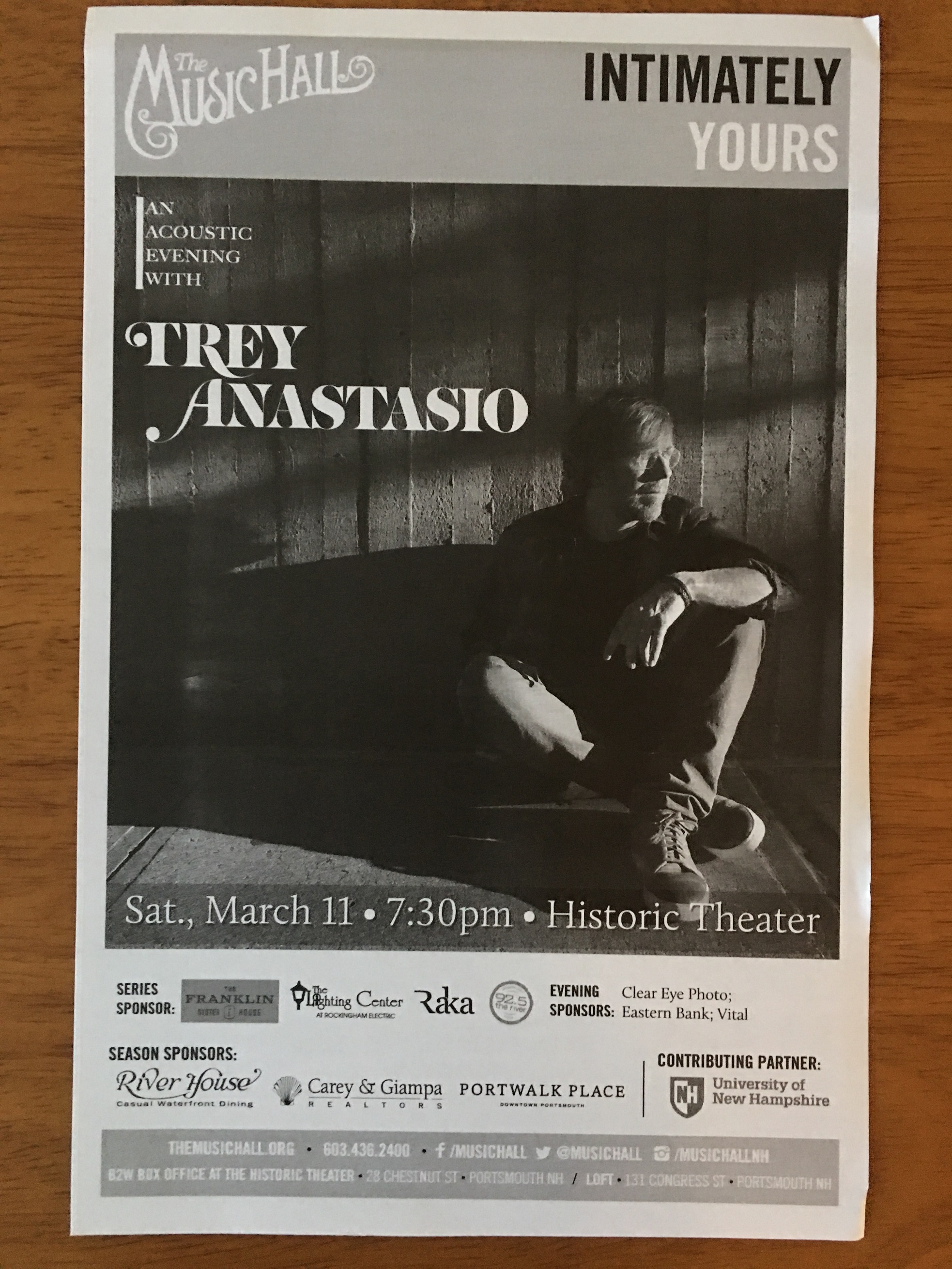TREY AT THE PORTSMOUTH MUSIC HALL
[This recap is courtesy of Phish.net contributor, Jeff Goldberg (user @Jeff_Goldberg.]. -charlie]
Every once in a great while, an artist announces an upcoming event or two that triggers an immediate “must see” knee-jerk response from the deepest realms of its fan base. In the world of Phishdom, events like Big Cypress, The Clifford Ball, The Hampton Reunion shows, and the Red Rocks shows are legendary examples of such. The heart-pumping excitement which surged through my music-loving veins when I read that Trey Anastasio was planning on playing three solo acoustic shows in the Northeast reminded me of those aforementioned days of yore: the days when the mere idea of missing such a revered event would cause enough cognitive dissonance that a solid night’s rest would potentially become a challenge until the conundrum had been resolved.
The opportunity to enjoy a rare treat had been presented to the music fans of the world: getting to see Trey play an entire show armed with nothing but his acoustic guitar, his voice, and a few clever tricks up his sleeve.
Saturday night March 11, my wife and I had the pleasure of seeing Trey perform an intimate acoustic set in a venue that, in most normal circumstances, would be far too small a setting to be able to handle a gig for someone who has reached Trey’s level of notoriety in a rock band context. It was a frigid evening in New England. We arrived up in Portsmouth at around 4:30 PM, and the temperature was already below 10º Fahrenheit. Seeking refuge in a few of the various downtown breweries and tap houses until show time, we discussed the previous two performances and made a wish list of songs that we’d like to hear. (I had my fingers crossed to hear an acoustic version of “Stash,” but alas, I’ll have to wait to hear that one performed.)
As a guitarist myself, the potential of seeing an entire show with Trey on his acoustic guitar was particularly exciting to me; much of my guitar-learning years were spent playing Phish songs on an acoustic guitar, so I felt somewhat of a personal duty to see him in this environment. (I started listening to Trey in 1992, back when Phish was still actually playing in venues like The Music Hall, so the throwback to my youth with a show like this was something that I knew from the moment I found out about it that it would be something that would speak to me.) I was 14 years old in 1992… and that’s exactly how old I felt, giddy with excitement, as I walked through the front doors of the cozy theater. The venue is classic and beautiful, and is the type of place whose well-designed acoustics and timeless aesthetic lend themselves to small classical ensembles, jazz combo groups, and operas.
We made our way to our seats (right in front of the soundboard on the main orchestra level), and marveled at the majestic, domed ceiling, and the balcony above us. Having entered the show a bit early, I decided to take the opportunity to have a glance at Trey’s rig and equipment set-up, so I meandered up to the stage.

From my vantage point -- but I’m not 100% sure on this -- it appeared that Trey was going to be playing a sunburst-stained Martin HD-28V: a herringbone version of the classic D-28 dreadnaught steel-stringed acoustic for which Martin is most well-known, with vintage tuners and specifications. Trey had a fairly simple set-up. He ran his acoustic with two pickups: a sound-hole transducer pickup (in lieu of an actual condenser microphone pointed at the guitar), and a saddle-mounted, piezoacoustic pickup being run to a 1/4” output jack. Trey’s amp was an unknown (to me) model of Victoria, which had a footswitch controlling its built-in tremolo circuit.
Trey also had his Whammy II and Boomerang Phrase Sampler pedals at-the-ready, but unique to this set-up, he was also running his vocals through the Boomerang, in order to loop his voice whenever he chose to do so. Other than reverb, which was coming from either the Victoria amp or the soundboard (I couldn’t tell which), those were Trey's only effects.
Trey came out (predictably) about 35 minutes late, so the lights went down at around 8:05 PM. The energy in the room was palpable, as the veteran audience (nobody seemed to be below about 30 there) seemed to know in advance that what they were about to witness was going to be something special. Trey picked up his guitar, which was pre-tuned to an open chord, and started the melodic intro to "Wingsuit," making its acoustic debut. The rig sounded spectacular in the room. You could hear the organic woodiness of the Martin guitar quite distinctively.
Up next was another acoustic debut of a classic: "Fee." Utilizing the sides of the guitar as a rhythm instrument, Trey was able to successfully mimic the kick drum beats from the electric version, so it was immediately recognizable. In the song's coda, Trey made a loop with his Boomerang, jamming over it, and elating the crowd.

These shows brought with them a lot of banter from Trey, but this night especially had many-a-story from his archives. Several of the songs he performed had been debuted by Phish at that very same venue 25 years earlier, almost to the day. Trey mistakenly misspoke and said that it had been 15 years earlier, until he was promptly corrected by the crowd, in-turn completely throwing him for a loop that he had somehow forgotten about 10 years of his life. It actually took him a song or two to recover from his embarrassment from the flub.
"NICU," which followed, was one of the those songs, as were "My Friend My Friend," "Sleeping Monkey," and "Maze." "Maze" was a curious choice to be performed acoustic; I never would have guessed that it could be successfully made into an unplugged song. It was brilliant. For the jam section of the song, Trey made a loop on the Boomerang, and then flipped it in reverse (so the loop was playing backwards) and set his Whammy to an octave-up setting (giving the effect of doubled notes), and then turned on the amp’s tremolo effect, which is a regulated pulsing of volume up and down, creating a dreamy feel to the guitar’s timbre.
Certain songs, like "Back On The Train," "Dog Faced Boy," and "Dirt," were far more obvious choices for an acoustic set, as their original recordings were recorded using acoustics. These songs were of course also a welcome treat to hear. Notably, throughout the night, the audience participated quite a lot: "NICU" featured the crowd filling in for Mike’s verse of the vocal round at the end; "Sleeping Monkey" had everyone harmonizing perfectly with Trey; a fun-filled "Bathtub Gin" sent the fans to their feet during the scatted melody line before the jam; and, obviously and inevitably, "Wilson" once again got everyone into it from its start.
Trey seemed humbled, and extremely appreciative of the crowd. He clearly had a blast throughout the night. His passion and energy engaged the audience through a musical osmosis: a shockwave of vibes which, when the circumstances are exactly right, and the stars are in the proper alignment, dial into a magic which can only be experienced by being there in person. And every person lucky enough to be there was keenly aware of this before, during, and after what turned out to be one of the most memorable live performances that I’ve had the honor of seeing throughout my life.
Comments
You must be logged in to post a comment.


 The Mockingbird Foundation
The Mockingbird Foundation